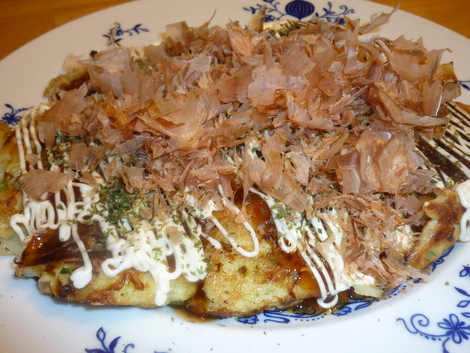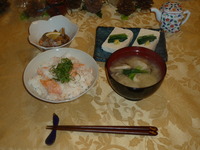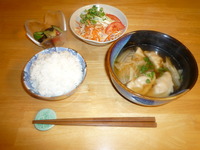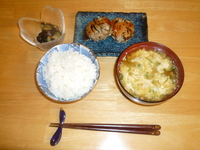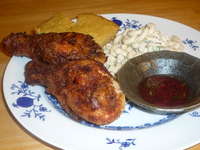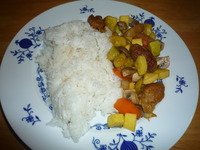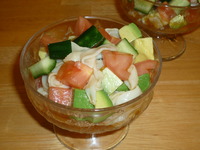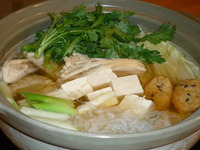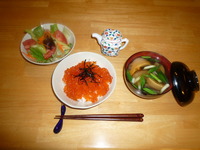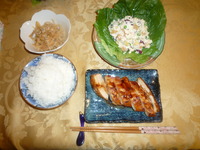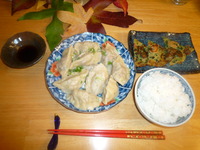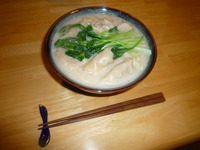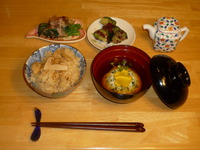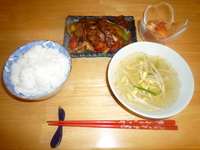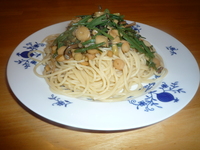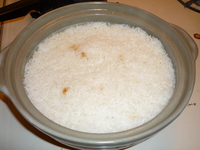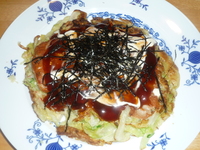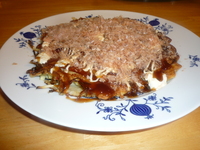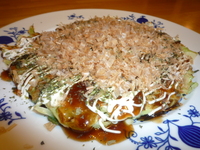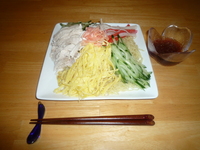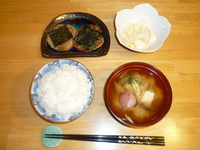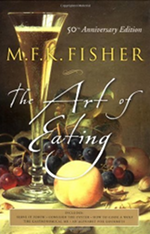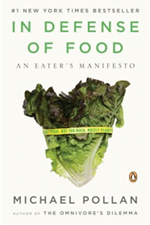Monday, October 4th, 2010
If there's one reason to move to a city, it's because of the food. At least that's what I told myself when I moved to Osaka. Osaka has traditionally been called "Tenka no daidokoro" or the "Nation's Kitchen." One of the things Osakans pride themselves on is their good food. Osaka is famous for many things but you cannot, I repeat CANNOT visit Osaka without eating Osaka-style Okonomiyaki and takoyaki. Osaka's culinary culture spans thousands of years however within the last century they have become famous internationally with their invention of instant ramen, conveyor belt sushi and their love of death defying fugu (pufferfish).
My friend called me the other day and asked me how to make Okonomiyaki. I mulled over this for quite some time because I wanted to give him a traditional style okonomiyaki recipe that my Osakan friends would approve of but, because some of the ingredients are hard to come by, I also wanted to provide him with a simplified recipe that could easily be made in an American kitchen. And just because, I thought it would be nice to include a fast and easy version. I'll post the simplified and fast and easy versions in my next few posts. Here's a chart of the major differences between the types of Okonomiyaki I'll be posting:
Osaka Style Okonomiyaki
| Ingredients |
American Kitchen |
Easy Breezy |
Authentic |
| Flour |
All Purpose Flour |
Okonomiyaki Flour |
All Purpose Flour |
| Dashijiru |
Fish Stock/Seafood Stock |
Dashi Powder |
Dashijiru |
| Sauce |
Homemade Sauce |
Otafuku Packaged Sauce |
Otafuku Packaged Sauce |
| Cooking Method |
Frying Pan |
Hot Plate/Griddle |
Hot Plate/Griddle |
| Other Ingredients |
Baking Soda |
N/A |
Nagaimo/Yamaimo |
Click below to view the other Okonomiyaki posts and recipes:
Okonomiyaki Equipment
Okonomiyaki (American Kitchen)
Okonomiyaki (Easy Breezy)
Now, I should also explain that there are other cities and regions in Japan that have their version of okonomiyaki but...let's just say I prefer Osaka-style okonomiyaki. If you want yakisoba, eat it as yakisoba. There's no need to mess up a perfectly good okonomiyaki. I don't have anything to say about monjyayaki. I guess I just don't get it.
Okonomiyaki is often described as being a "Japanese pizza" but I assure you that it is nothing like a pizza other than the fact that it's round and that you can choose from a variety of toppings or filling ingredients. When you go to an okonomiyaki restaurant, there is almost always buta tama (pork okonomiyaki) and some sort of mixed seafood combination or meat and seafood combination. Occasionally, I'll see and a green onion okonomiyaki on the menu that's heavy on the green onions and is best served with a little soy sauce. My favorite okonomiyaki restaurant in Osaka uses nagaimo, sakura ebi and bits of konnyaku (gelatinous grated yam) but most of the chain restaurants don't use these ingredients.
When you go to large chains like Fugetsu (
Fugetsu menu), the okonomiyaki is brought out in bowls and depending on the store, they will let you make it yourself on a
teppanyaki (a griddle built into the table) or sometimes the waiter/waitress makes it for you. In Osaka, you almost always make it yourself but you can ask them to make it for you and it's not a problem. When I went to a Sapporo Fugetsu, they provided laminated directions on how to make it yourself but when I went to a Fukuoka chain, they wouldn't let me make it. I found that to be very strange. Anyway, here are my results after many many test recipes. The thing I miss about eating okonomiyaki at a restaurant in Japan is the atmosphere. Okonomiyaki should be enjoyed with friends and over a cold beer so I hear. I don't drink beer :-o
Classic Osaka-style Okonomiyaki (Buta tama) Ingredients (Servings 1)
150 grams of cabbage
1/4 cup of chopped green onions
50 grams of grated
nagaimo or yamaimo
1 egg
50 grams of all purpose flour
50 ml of
dashijiru or see below for simple dashijiru recipe
2 slices of good bacon
1 tablespoon of chopped benishoga (pickled red ginger) optional
Simple Dashijiru Ingredients
1 cup of unpacked
Katsuobushi
120 ml water
*You'll need 100ml for 2 okonomiyaki or 50ml of dashijiru per serving but some of the water will evaporate and get absorbed by the katsuobushi.
Topping Ingredients
Otafuku Okonomiyaki sauce
Aonori
Fine katsuobushi
Equipment
1) Hot plate where you can control the temperature (this is the best)
2) Spatulas
3) Mayo dispenser for extra fun
See
Okonomiyaki equipment for more detailed information.
Directions
1) Make the dashijiru. A simple katsuobushi dashijiru will do. Heat the water and add the katsuobushi and bring it to a slow simmer. Turn off the heat and let it cool and strain the katsuobushi. Nibandashi is also fine.
2) Measure the dashijiru, grated nagaimo and egg and add to a mixing bowl. Make sure the dashijiru is cooled so it doesn't cook the egg.
3) Sift the flour directly into the bowl.
4) Chop the cabbage into 1/8 of an inch slices. The thickness of the cabbage is important for the cooking time I have here. It shouldn't be too thick or paper thin so that it cooks just right. Tip: remove the core before slicing so that you don't end up with tough pieces in the okonomiyaki. Toss the cabbage into the bowl.
5) Chop the green onions finely and add them to the bowl. At this point add in any other ingredients that you like such as shrimp, squid, sakura ebi, benishoga (red pickled ginger) konnyaku, etc.
6) Mix lightly until combined but don't over mix. This helps to keep it light and fluffy.
7) Get your hot pan or griddle hot to about 200 C or 390 F degrees.
8) Lay the bacon on griddle and immediately top it with the cabbage and form a round circle.
9) Allow it to cook for 5 minutes and then flip using two spatulas.
10) Cover and continue to cook for 3-5 more minutes and turn up the heat slightly to 240 C or 460 F degrees.
11) Top with okononiyaki sauce, aonori, mayo and katsuobushi!
Start out by making the dashijiru. Ichibandashi or nibandashi will do.
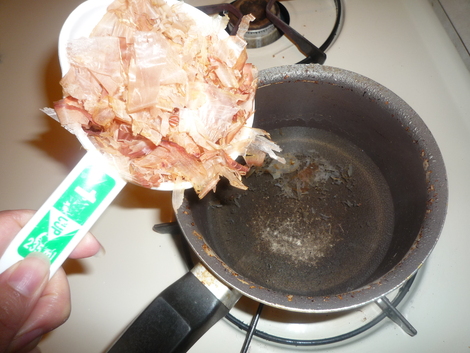
Add the dashijiru, egg and the grated nagaimo to a measuring cup. It shouldn't exceed 2/3 cup or should be 150ml.
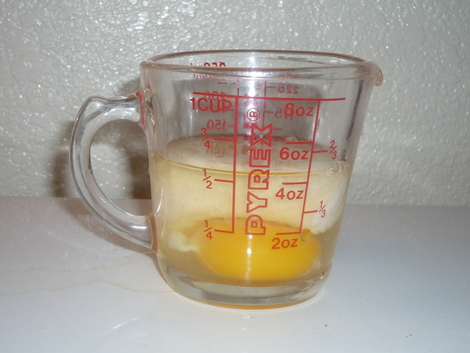
Slice the cabbage in 1/8 inch slices. Remove the core before slicing.
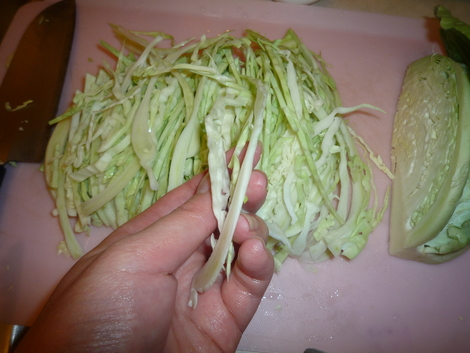
Add the dashijiru-egg-nagaimo mix and sifted flour to a bowl.
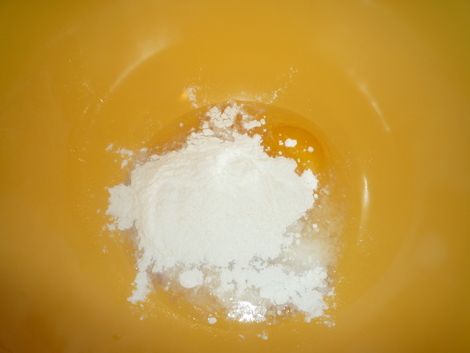
Add the cabbage, green onions and any other "gu" ingredients that you would like to add. See the
Fugetsu menu link for ideas.
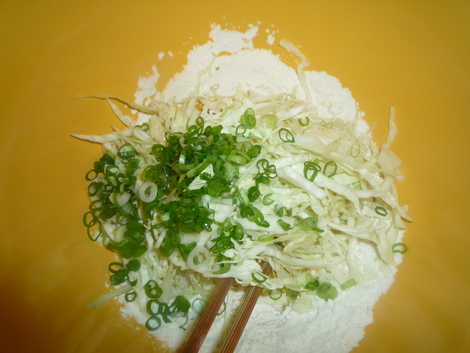
Mix lightly until ingredients are combined to keep it light and fluffy.
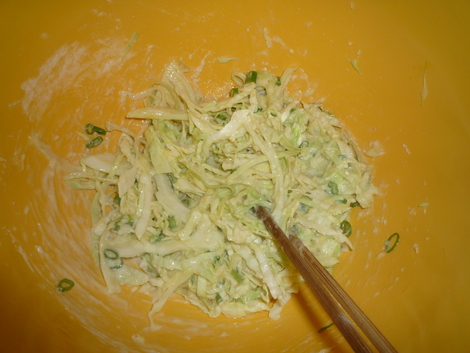
Add the bacon to the hot plate/griddle and immediately (before the bacon starts to curl) add the okonomiyaki mix on top. The above recipe is for 1 serving but I made two batches here for testing purposes...er well I only ate 1 at a time.
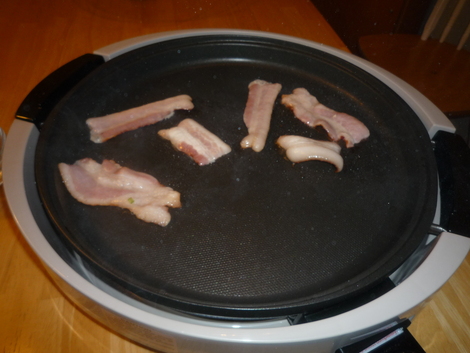
Happy okonomiyaki twins. Cook at 200 C or 390 F for 5 minutes.
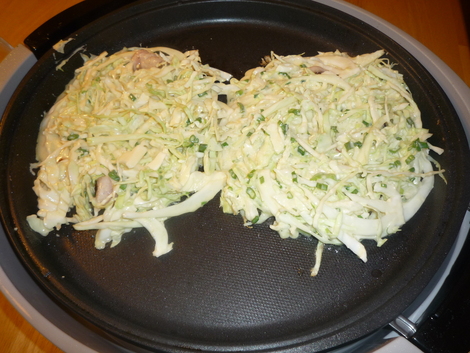
Cover and increase the temp to 240 C or 460 F and cook for 3-5 more minutes.
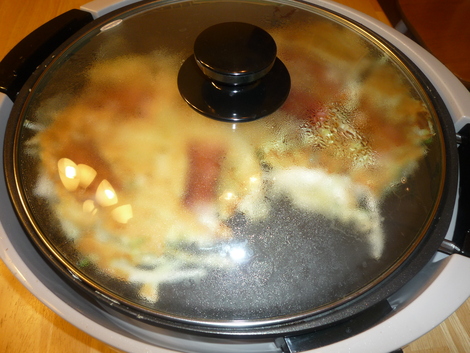
Otafuku is a pretty good brand for okonomiyaki sauce. The Otafuku lady reminds me of my great grandmother. Old school Japanese beauty...far from what's considered beautiful today. I have no idea what I'm talking about now.
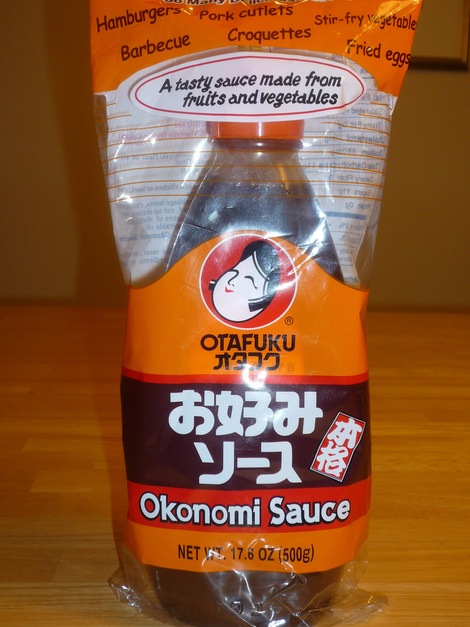
Serve it up with aononori, mayo, okonomiyaki sauce and...
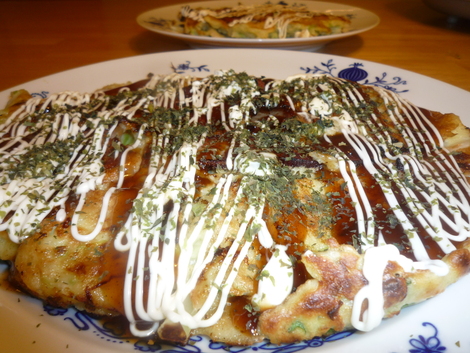
top it off with the fine katsuobushi so it can do that katsuobushi dance. (See
Katsuobushi on the different types.)
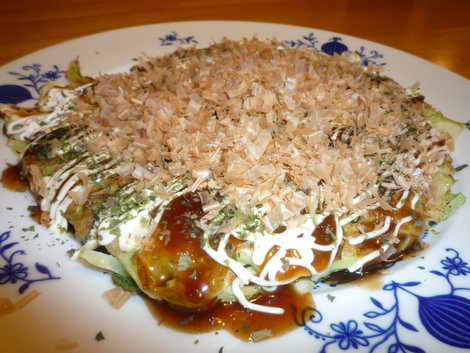
The larger katsuobushi flakes absorb and sop up the sauce which can be too much.
